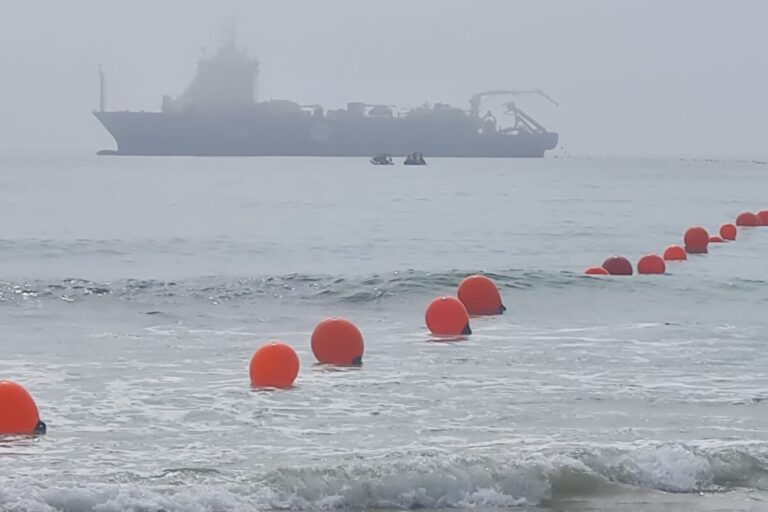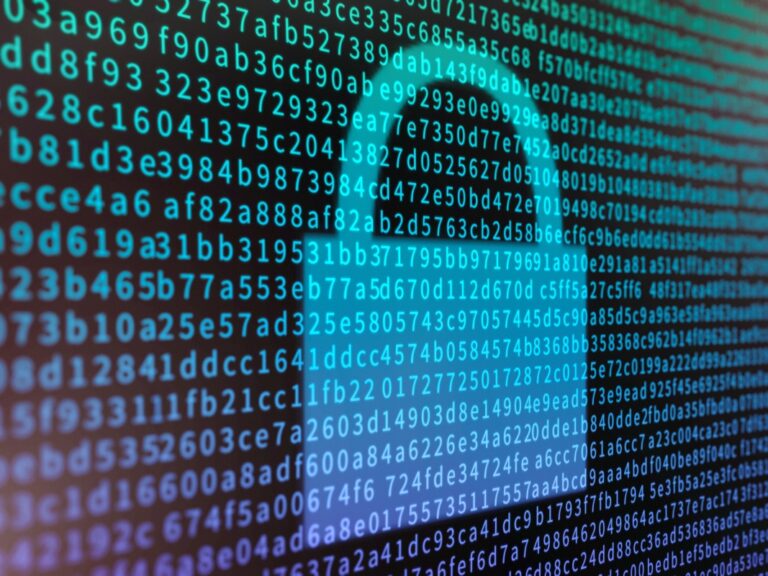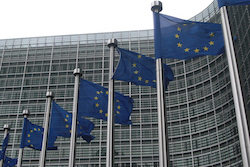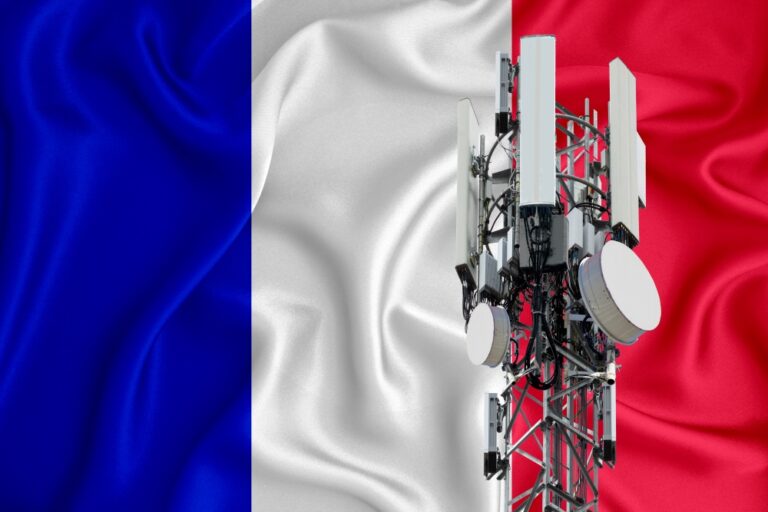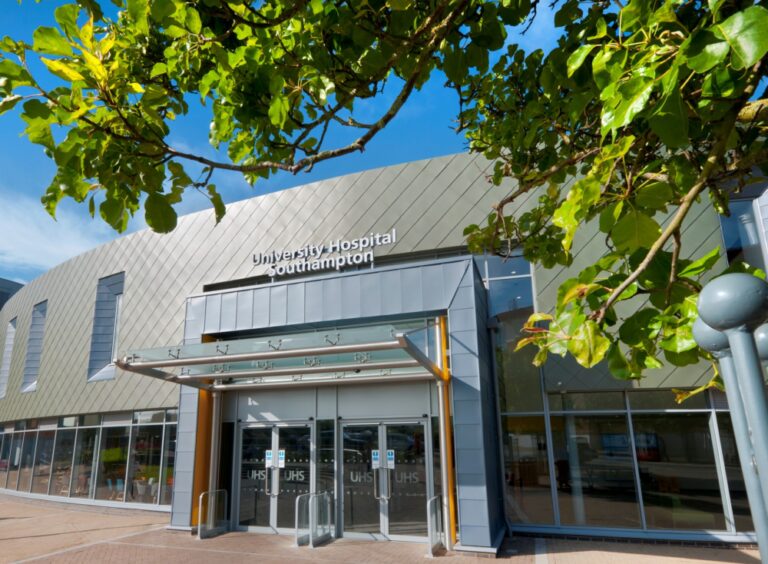James Bristow tells us where to look
On behalf of mobile network operators everywhere, Mobile Europe asked James Bristow, Cradlepoint’s senior vice president for Europe, the Middle East and Africa, the question everyone secretly harbours about 5G: can you show us the money? Cradlepoint develops cloud managed wireless comms systems for the edge of the mobile network (such as the port pictured above). Its first products were 3G and 4G routers that created Wi-Fi hotspots for mobile network operators. It was bought by Ericsson in 2020 for $1.1 billion. In the US it built a 5G/FWA routing system to expedite business information across T-Mobile’s mobile edges. Is this was mobile operators in Europe want? What do you tell their counterparts in the Middle East, when they ask you to ‘show me the money’? How can Cradlepoint monetise Africa?
Mobile Europe: What are the Mobile network operators of Europe, the Middle East and Africa asking you to do?
James Bristow: The carriers want suppliers to help them instantly deliver new revenue streams and in particular to monetise their investment in 5G.
Since Fixed wireless access FWA is morphing from a failover to a primary connection it is the key to meeting these objectives. The new revenue will initially come from making the 5G network reach into areas without fibre and engage customers who want more agile connectivity models.
In theory this is a sweet spot for the carriers as they use existing marketing and billing models to drive increased 5G usage. The growth in reach should be focused on the enterprise market where there is more potential to sell a value proposition in the medium to long term. Cradlepoint devices are designed to respond to this high usage model and deliver ‘unbreakable’ internet to help protect customers revenue, in the case of retail or reputation in the case of airlines and financial institutions.
Meanwhile Cradlepoint is being asked to help carriers deliver the value-add services that will be crucial as 5G becomes ubiquitous and first mover advantage becomes less important. High bandwidth services such as the commercial application of virtual and augmented reality (VR/AR) which companies can use for complex maintenance. Mobility which sets up ‘office level’ connectivity on the move and the ability to offer a managed service to end users is another. The Net Cloud Manager is a key request from carriers, as they know it lets them offer and charge for an additional service that has little cost to them. The rise of the managed service provider carrier will be another key offering and Cradlepoint devices make the transition from fibre to FWA seamless through with genuine technical and commercial agility. Cradlepoint has always worked with the global carriers and the addition of Ericsson has allowed an even closer level of collaboration and understanding. The new portfolio reflects this with an emphasis of agile 5G and commercially viable end devices that can be easily delivered and included in to existing carrier offers.
How much coding is involved in making a 5G router that actually solves the network edge problems of, say, the computing and networking infrastructure of a shipping port or a massive mining complex?
Huge areas like shipping ports and mining complexes are often built-in remote areas. As a result, these areas have the same consistent issue, a limited wired infrastructure which hinders connectivity. To operate effectively they need to generate and share huge amounts of data. From where cargo containers are located, to which ships are in port and what machines are running at any given time. Only mobile networks are flexible and adaptable enough to meet the needs of these locations.
Managing this network requires multiple routers and a vast amount of software. Routers would need to share information with the main office, but each has an individual sim card and data plan that needs to be managed. At Cradlepoint, we provide a NetCloud central management system that sees everything through one screen. This coding replaces the need for manual, time consuming interjection. In the past, engineers would need to travel around sites testing connections constantly. Instead, through this platform IT teams can monitor routers, solve problems remotely and scale data plans up and down as needed from a central location. This ensures any problems can be proactively addressed, and that sites continue to operate to the best of their ability.
NetCloud makes managing cellular as easy to use as wired networking. This means that we have added cellular intelligence into the cloud-based management so that it is easier for IT to administer the network, removes risk while operating the network and improves the user experience.
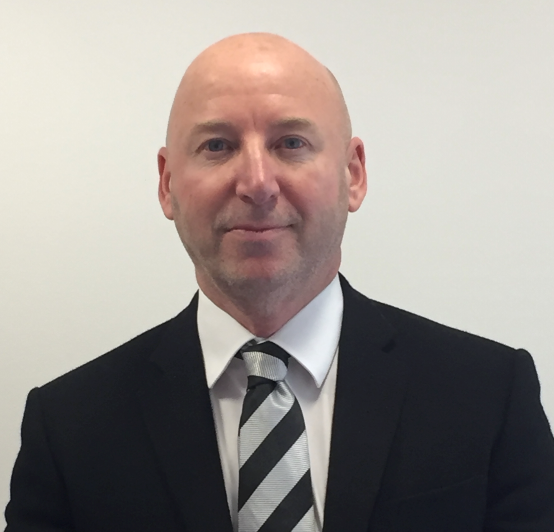
What problems do enterprises face and how does the coding in your 5G routers solve them?
Today’s enterprise must meet customers wherever they are. Stores are no longer constricted to one site but can operate pop-up locations at festivals. Similarly, businesses now need to support a much wider portfolio of technology than ever before. With increasing demand from digitisation, the internet of Things and connected smart devices, traditional Wi-Fi can soon be overwhelmed. As a result, organisations waste unnecessary time and resources sending engineers to fix problems and lose out on potential revenue. For instance, in the current economic climate it is catastrophic if a restaurant cancelled operations for the day.
Cradlepoint’s 5G routers fix this problem by allowing engineers to resolve issues remotely and identify them before they snowball into something severe. Likewise, setting up a new router is as simple as plugging it in and turning it on. Meaning businesses no longer need to wait months for new cable to be installed and can have fast and reliable connectivity from day one. Finally, with network slicing enterprises can guarantee that critical operations are always supported with sufficient bandwidth. All of this helps businesses become more resilient and flexible and support the use of incredible technologies that improve business outcomes and customer experiences.
What’s been wrong with 5G routers until now? What problems are you solving?
The problems 5G routers are trying to solve is adding agility, reach and reliability in networks that have been constrained to wherever they can plug into an ethernet or stay within the range of their Wi-Fi. As businesses and organizations need to extend their reach to serve a new customer or gain efficiencies, they may find themselves in remote locations, in temporary locations or needing to be in vehicles. Wires often won’t work in those situations. Also, the average time to get a new wired connection is over one month. If you need to move locations frequently, you can’t wait for the time to deliver a wire. Now 5G is delivering performance and latency that rivals wired connections and with new carrier unlimited rate plans, the cost structures are approaching the expectations typically seen in Enterprise networks.
What advances have you made with those enterprise routers?
Cradlepoint makes a concerted effort to build in features one would expect in enterprise routers, which is distinct because we can do this using either wires, cellular, or both. Recently, Cradlepoint introduced Cellular-optimized SD-WAN that added critical adaptations to ensure efficient and cost-effective operation especially when using cellular networks. Additionally, we developed a Zero Trust Network Access solution to ensure inherently secure networks whether operating on wired or wireless connections.
Will 5G routers ever be affordable in the home? Any chance you could build an affordable range for consumers?
Cradlepoint no longer develops products for the consumer market but in Americ, carriers are offering 5G Fixed Wireless Access solutions for consumers that are meant to replace Cable or xDSL for internet, entertainment and phone service. It’s a service that is growing quickly according to our intelligence.
Do you build a portfolio of solutions, to a range of different problems and add them one by one?
We typically identify the top use cases where our customers would benefit from cellular. For example, we have identified a temporary network use case to accommodate retailers who want to extend their reach and appear in locations where customers already frequent. So, they have built pop-up locations in parks, musical and sporting events, and so that they can attract new customers with the same experience they would find in a fixed store. We identify multiple use cases so that our engineers can build solutions with the right features, and we can go to market targeting customers with similar needs.
What are the priorities for Cradlepoint at the moment? At a guess, is Private 5G for enterprises going to be your growth market?
While Private 5G is a key growth area, and we will have leading edge solutions in this space in 2023, Cradlepoint is also pursuing many opportunities for delivering Wireless WANs in fixed sites, vehicles, and IoT. Fixed Wireless Access is a notable trend where carriers deliver a primary cellular wireless router to businesses and consumers.



